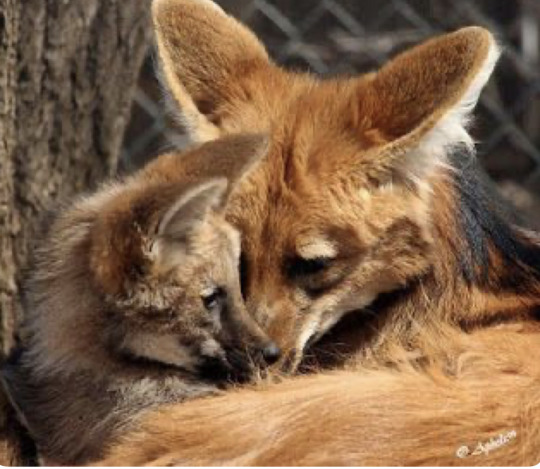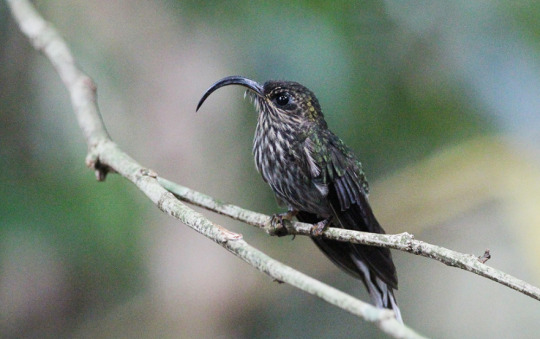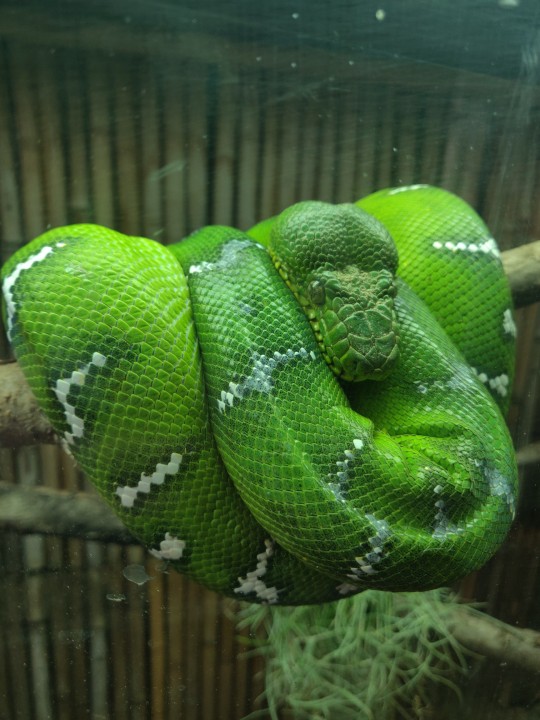#South American wildlife
Explore tagged Tumblr posts
Text


This animal was requested!
#south american wildlife#golden-handed tamarin#brazil#guyana#french guiana#suriname#venezuela#tamarin#mammalia#mammal#mammals#primates#haplorhini#simiiformes#callitrichidae#animal polls#poll blog#my polls#animals#polls#tumblr polls
582 notes
·
View notes
Text

What are these creatures? They are pudu, the globe's littlest species of deer. The adults usually weigh only about 12 kg (26 lbs.).
274 notes
·
View notes
Text

Rufous-Tailed Jacamar (Galbula ruficauda)
Family: Jacamar Family (Galbulidae)
IUCN Conservation Status: Least Concern
Though somewhere between hummingbirds and kingfishers in appearance, jacamars like the Rufous-Tailed Jacamar are believed to be cousins of woodpeckers and have historically been placed alongside them in the order Piciformes, although more recent genetic evidence suggests that alongside their close relatives the puffbirds they may actually be distinct enough to warrant being reclassified as part of entirely new order, the Galbuliformes. Found mainly in forests and well-vegetated shrublands across northern South America and southern Central America, Rufous-Tailed Jacamars, like most members of their family, are agile insect-eaters that use their extremely long, narrow bills to catch small insects such as butterflies and wasps straight out of the air.
-----------------------------------------------------
Image Source: Here
#Rufous-Tailed Jacamar#jacamar#jacamars#bird#birds#zoology#biology#ornithology#wildlife#south american wildlife#north american wildlife
88 notes
·
View notes
Text
Patagonia Region in Argentina and Chile...









#nature#hiking#travel#naturecore#nature photography#patagonia#argentina#chile#glacier#wildlife#wildflowers#mountains#andes mountains#cougar#puma#south america#south american wildlife#landscapes#trees#forests#lakes#mountainside#snow capped mountains#guanaco#vicuña#flora and fauna
24 notes
·
View notes
Text

Amazon milk frog, Trachycephalus recinifictrix
Native throughout northern South America, living in the canopies of the rainforest. They get their name from the milky white substance they secrete when threatened that can cause illness or death, similar to other species like poison dart frogs.
#south american wildlife#wildlife#frogs#zoo animals#zoos#rainforest#amphibians#animals#milk frog#wildlife photography#nature photography#frog#mine
182 notes
·
View notes
Text
Not too sure how fitting this would be for this post, but @paleodictyoptera have this I guess?
Talking about South America, I always thought it was so strange that... our animals are considered "exotic." Like we have ocelots, macaws, SO MANY bat species including Spectral bats, no native canine species BUT several species of otters and other Mustelidae members and a lot of frogs but no salamander nor newt species.
Like you guys don't have any native parrot species??? Nor see lightning bugs on a regular basis??? And you guys have animals that are actually bigger than humans besides crocodilians???? Like it's so bizarre that the continents are so close together yet have completely different ecosystems and wildlife????
Also the whole "Temperate Seasons" thing. What. What does snow feels like? /gen
13 notes
·
View notes
Text

Maned wolf and pup
The maned wolf is not actually a wolf. It is the only species in the genus Chrysocyon (meaning “golden dog) and is the largest canine in South America. Near threatened.
69 notes
·
View notes
Text

Lasiurus varius
Cinnamon Red Bat
#cinnamon red bat#lasiurus varius#vespertilionidae#chiroptera#bat#bats#cute bats#Chile#south american wildlife
19 notes
·
View notes
Text
Weird Creature of the Day: Yrupe/Santa Cruz water lily

These are literally bigger than I am. Here's Victoria cruziana!
Clearly earning their status as one of the largest water lily species in the world, V. cruziana's individual pads grow up to 2 m (6.56 ft) in diameter.
They're native to South America, mainly Brazil, Paraguay, Argentina, and Bolivia.
Their seeds must stay fully submerged in order to survive and eventually germinate.
This plant is thermogenetic, meaning it produces heat-- it is believed this is because while it prefers colder waters, it must release a lot of heat in order to attract pollinators to its blooms. Combined with its size, I wouldn't mind curling up in one for a nice heated blanket lake nap. I think it would fix me.
V. cruziana is a night blooming species. Their flowers only bloom for 2 nights at a time. The first night, the flower is a soft white, and on the second, it turns a lovely purple-pink. Its strong scent is reported by some to resemble fruit, such as pineapple (seriously, I want to see this in person so badly, that sounds wonderful!).
They rely primarily on various scarab beetles species for pollination.
Its English/Westernized common name, as well as its scientific name, come from the name of Andres de Santa Cruz, a Bolivian military official, politician, and frequent interim president of Peru (multiple times?) in the 1800s. It was named after him when the French naturalist sponsored by Santa Cruz, Alcide d'Orbigny, brought specimens back to France for display and study. To this day, the plant is popular in botanical gardens around the world.
Image credit: (c) Greg Lasley – some rights reserved (CC BY-NC) via
#This beautiful girly LOVES stagnant water and bugs and being smelly!#The botanical gardens thing makes a lot of sense both because of what a clear spectacle Yrupe makes#And also because MOST popular houseplants come from the global south and their popularity is a direct result of the “”“exotic”“” trendiness#of them to colonizers and settlers around the world#south american wildlife#native wildlife#water lilies#botany#weird creature feed#wcf#wcotd
4 notes
·
View notes
Text







Today's beasts, capybara! With an orange, a frog, and a butterfly. I'm glad the internet developed such a love affair with these guys, they're unique and such a delightfully odd creature. An absolutely massive rodent who just swims and chills, to the point a lot of smaller creatures are calm around them too. That said, remember they're not a pet, they're super destructive to your home and have exactly the kind of bite a giant rodent is capable of! Let the wild be wild.
The butterfly capybara is the last friend shaped boy I have right now, so if you'd like him or any other beast, please check out Bittythings and Beasts.
https://www.etsy.com/ca/shop/BittyThingsAndBeasts
#capybara#wildlife#south american wildlife#rodents#capybara meme#friend shaped#polymerclay miniatures#polymer clay#cute art#kawaii art#my art#anime north 2023
6 notes
·
View notes
Text
Creature Awaits #211
Each week I plan to feature an amazing creature, admiring God's fantastic artistry. Hopefully it’ll brighten someone’s day to see something new and interesting if they haven’t seen it before. : )

(Another awesome photograph from the talented Cloudtail the Snow Leopard, (CC BY-NC-ND 2.0))
The Bush Dog
Scientific Name: Speothos venaticus
Region: Primarily northern South America reaching up a bit into Central America
Size: About 22"-30" long (~57cm-75cm) with a roughly 5"-6" (~12.5cm-15cm) tail
Interesting Notes: These adorable wild dogs live and hunt in packs, feeding on various mammals and birds, even large ones such as rheas, capybaras, and peccaries. Their packs revolve around a primary pair surrounded by their closest relatives. The primary pair breed and the other members help take care of the pair's young.
#creatureawaits#beautiful animals#bush dog#Speothos venaticus#wild dogs#South American wildlife#pack dogs#unusual dogs#hunt in packs
2 notes
·
View notes
Note
have you done lake titicaca frogs? they’re such little freaks
Oh wow, I'd never heard of these! They are so silly looking :)


Photos thanks to Zoo Berlin & Joel Sartore from National Geographic!
#endangered species#south american frog#lake titicaca#lake titicaca frog#titicaca water frog#endangered animal#endangered#frog#frogs#south american wildlife#anura#amphibian#amphibians#animal polls#poll blog#my polls#animals#polls#tumblr polls
162 notes
·
View notes
Text



What are these creatures? They are all Surinam horned frogs (Ceratophrys cornuta).
33 notes
·
View notes
Text

White-Tipped Sicklebill (Eutoxeres aquila)
Family: Hummingbird Family (Trochilidae)
IUCN Conservation Status: Least Concern
The distinctive elongated, downwards-curving and perhaps just slightly goofy-looking beak of this small, dull-coloured hummingbird is an adaptation that allows it to feed on the nectar of plants with curved, tube-like flowers, particularly “lobster claws” in the genus Heliconia, which in turn rely heavily on sicklebills for pollination. Found mainly in evergreen forests across southern Central America and northern South America, White-Tipped Sicklebills, like other hummingbirds but unlike the vast majority of other bird species, utilize an insect-like manner of flapping that allows them to hover and move in any direction while in flight in order to carefully position themselves in a suitable place to extend their beaks and long, flexible tongues into flowers in order to feed, with a diet of sugar-rich, easily digestible nectar being necessary to meet the immense nutritional requirements associated with the extremely rapid flapping that makes their style of flight possible. Unusually for a bird White-Tipped Sicklebills are believed to breed multiple times each year, with males gathering together during the breeding seasons, producing harsh, high-pitch calls to attract females to their location and battling for the attention of mates in mid-air in a form of synchronised competitive courtship known as lekking. After mating, female White-Tipped Sicklebills build nests out of mammal fur, plant roots and spider webs (often hanging from or near Heliconia leaves, allowing for easy access to flowers) into which they lay 1-2 tiny eggs.
--------------------------------------------------------------
Image Source: Here
#White-Tipped Sicklebill#white-tipped sicklebill#sicklebill#sicklebills#hummingbird#hummingbirds#zoology#biology#ornithology#wildlife#animal#animals#south american wildlife#central american wildlife#bird#birds
158 notes
·
View notes
Text


Emerald tree boa (Corallus caninus)
#snakes#snake#emerald tree boa#reptiles#herpetology#south american wildlife#wildlife#mine#zoo#zoos#zoo animals#nature photography#nature#naturalist#photography#ecology#rainforest#tropical
17 notes
·
View notes
Video
youtube
Hidden Gems of the American South: A Luxury Traveler’s Guide
#youtube#gems#america#american#south#south american wildlife#americansouth#southwestern#american southwest#luxury#travel#travelers#guide#travel guide#hidden gems
1 note
·
View note